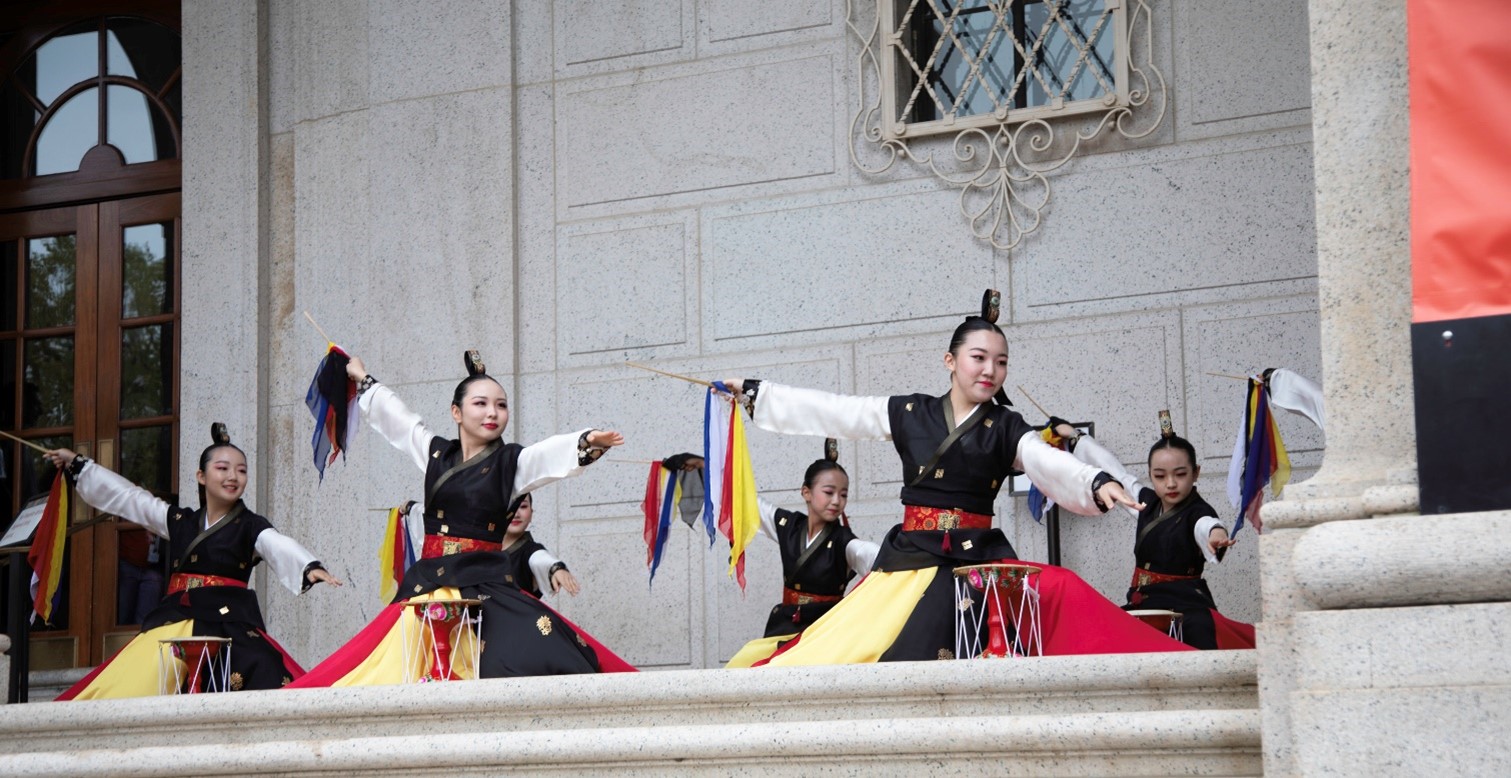National Museum of Asian Art Announces Its 2024 Chuseok Family Festival

Musical performers synchronously holding their instruments in the air at the museum’s 2023 Chuseok festival. Credit: National Museum of Asian Art, Smithsonian Institution.
The Smithsonian’s National Museum of Asian Art has announced its 2024 family festival commemorating Chuseok, known as Korean Thanksgiving Day. The event takes place Saturday, Sept. 21, 11 a.m.–4 p.m. It is free and open to the public.
Special performances, food, crafts, programming from local community groups and more are on the schedule, including traditional Korean lantern and fan making presented by the National Folk Museum of Korea. The full list of activities is available online.
Along with its annual celebration to honor Korean art and culture, the National Museum of Asian Art offers many resources to learn about Chuseok on its website, such as virtual tours of related collections, lesson plans and videos.
The Korean festival of Chuseok (literally, “autumn evening”) is celebrated in the eighth month of the lunar calendar when the moon is at its fullest. Associated with the harvest, the festival is a time for families to gather and give thanks to their ancestors. Together with Lunar New Year, it is one of the most important holidays in Korea and is marked by many traditions.
More than 5,000 people attended the National Museum of Asian Art’s inaugural Chuseok festival in September 2023.
The 2024 event is copresented by the Korean Cultural Center Washington, D.C. Support for this event is provided by the National Museum of Korea.
About the Smithsonian’s National Museum of Asian Art
The Smithsonian’s National Museum of Asian Art is committed to preserving, exhibiting, researching and interpreting art in ways that deepen our collective understanding of Asia, the United States and the world. Home to more than 46,000 objects, the museum stewards one of North America’s largest and most comprehensive collections of Asian art, with works dating from antiquity to the present from China, Japan, Korea, South Asia, Southeast Asia and the Islamic world. Its rich holdings bring the arts of Asia into direct dialogue with an important collection of 19th- and early 20th-century art from the United States, providing an essential platform for creative collaboration and cultural exchange between the U.S., Asia and the Middle East.
Beginning with a 1906 gift that paved the way for the museum’s opening in 1923, the National Museum of Asian Art is a leading resource for visitors, students and scholars in the United States and internationally. Its galleries, laboratories, archives and library are located on the National Mall in Washington, D.C., and are part of the world’s largest museum complex, which typically reports more than 27 million visits each year. The museum is free and open to the public 364 days a year (closed Dec. 25), making its exhibitions, programs, learning opportunities and digital initiatives accessible to global audiences.
# # #
SI-268-2024
